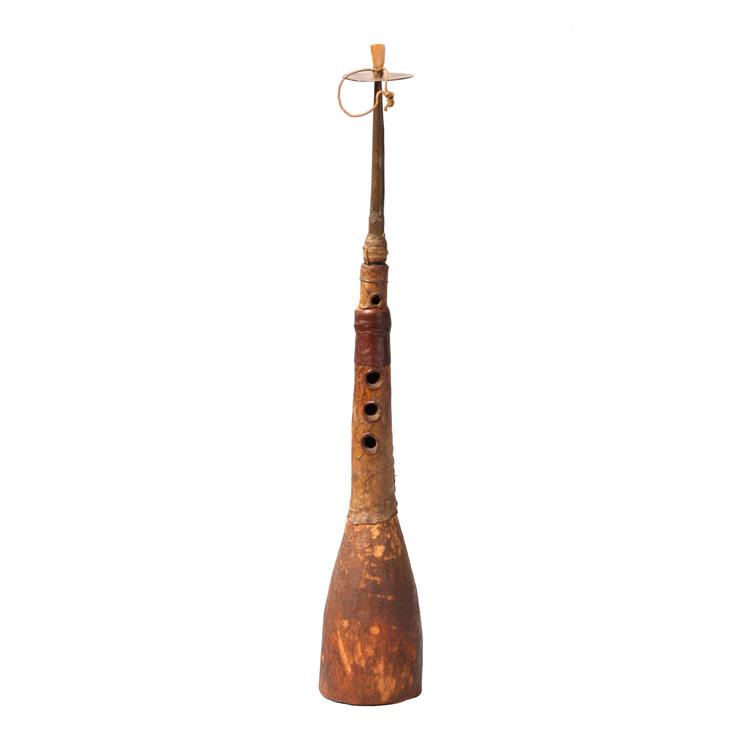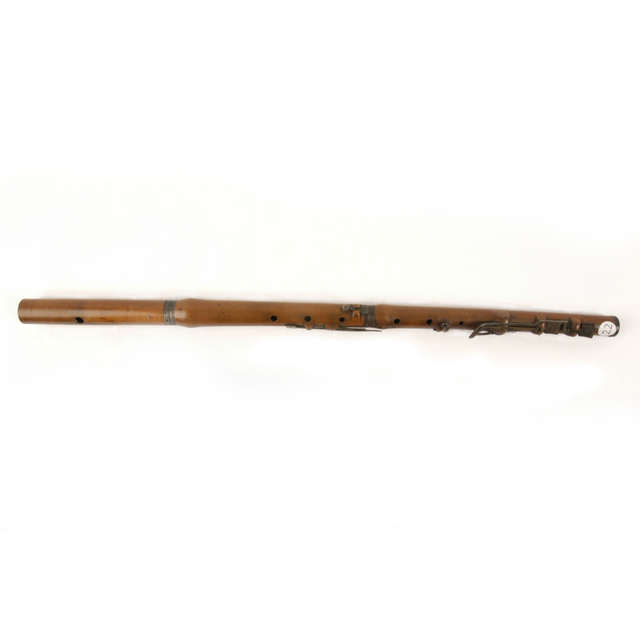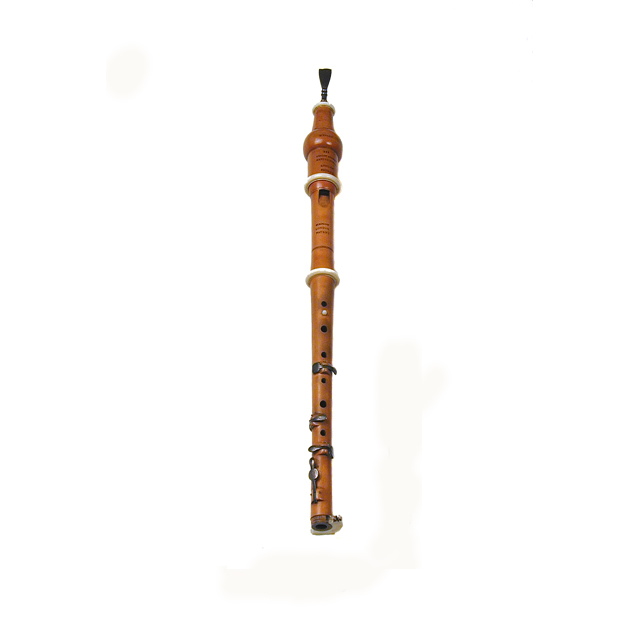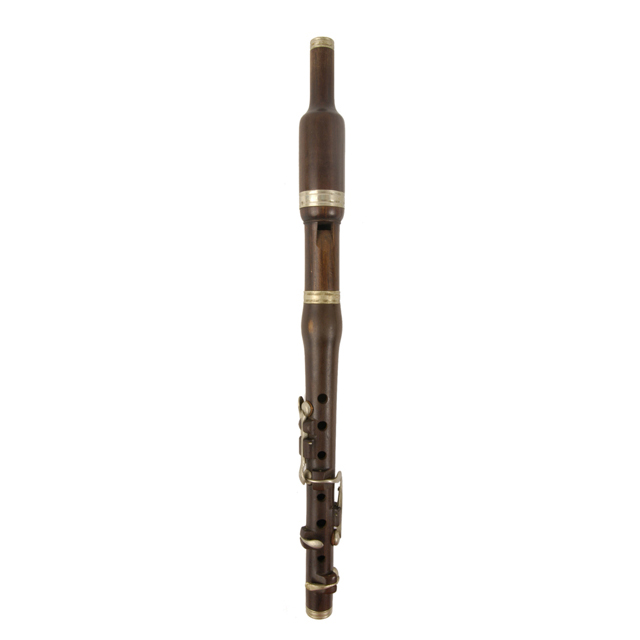
Algaita, shawm. Wood, the tube covered with leather. 3 frontal fingerholes. 2 holes of similar size to the fingerholes, front and back, near proximal end of the tube. Body made from a single piece of wood, which is very slightly conical in the fingerhole section, is more conical in the upper bell, and is cylindrical in the lower bell section. The interior of the bell is conical and expands evenly through the two bell sections. Fingerhole section is wrapped in leather, which is stiched along the back with vegetable fibre in an unstraight seam. Another, darker leather section (approx 41 mm long) is attached at the above the holes. Three large, roughly circular equidistant fingerholes with corresponding holes in the leather covering. The staple is a cone of metal with an overlapping seam visible along its length. It is attached to a cylindrical wooden section at the bottom, which is detachable from the main body. This has a single finger, or more probably thumb, hole, approx 6 mm diameter, a leather coating and a tenon-like narrow section at the bottom. The conical section of the staple has small groove cut to form narrow bands. These are approx. 1.5 mm wide and are arranged into seven groups of five or six. The pirouette is a disc of similar metal, soldered into place, which curves upwards very slightly. The reed is narrow and made from a fibrous material. A piece of vegetable fibre string holds the reed together and goes on to form a loop, which overhangs the pirrouette. Length of staple and reed: 210 mm, Width of reed: 10 mm, diameter of pirouette: 50 mm, length of body section: 290 mm, Outer diameter at staple reciever: 28 mm, outer diameter of bell: 77 mm approx.
Processions with the ruling emirs of the Hausa people of Nigeria are heralded by a band with drums, the long trumpet kakaki and shawm algaita.


































































































































































































































































































































































































































































































































